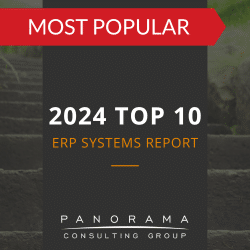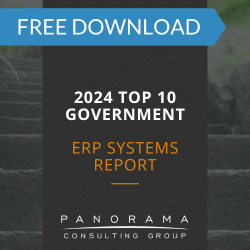During an ERP implementation, many organizations overlook the importance of business continuity and contingency planning. ERP vendors want to focus on the positive aspects of implementation and organizations want to get their ERP software implemented as quickly as possible without the hassle of extensive planning. For leadership teams that don’t understand the risks of ERP implementation, business continuity planning tends to be a lower priority item. It is viewed as more of a “nice to have” than a critical item on the path to success.
Despite the perceived benefits of an accelerated implementation, overlooking business continuity planning can increase business risk and project cost in the long run. In an era of increasingly interconnected business processes, knowing the potential implementation risks and planning for and mitigating those risks will save organizations significant time and money.
In a typical ERP system, multiple ERP modules interface with one another so if one module shuts down or experiences a delay, other modules are affected. The more modules that are interconnected, the more an organization suffers when part of the ERP system fails. With so serious a threat, no organization can afford to skip business continuity planning.
Following are five tips for developing an effective business continuity plan:
- Educate executives about the risks. If you expect executives to allocate the necessary money and resources for risk mitigation, they need to be educated about the importance of continuity planning.
- Understand that continuity planning is a business issue; not a technology issue. ERP systems can be fairly easy to fix after a shutdown but playing catch up with delayed orders and a disrupted supply chain is much more agonizing.
- Start developing a continuity plan at the beginning of an ERP implementation. The sooner your organization starts planning, the better. During system integration, your organization should validate its continuity plan to ensure that it addresses all interdependencies within the system as well as between the system and the rest of the IT infrastructure.
- Assign business continuity experts to the development of the plan. This skillset is fairly rare within organizations but it is a skillset that can easily be developed if an employee has a working knowledge of business process management and performance optimization.
- Test your continuity plan. Your organization should validate that the plan actually will work and the project team knows what to expect in terms of their role in system recovery.
The costs incurred from a nonfunctional or compromised ERP system outweigh the costs of business continuity planning. If your organization takes the time to evaluate the risks, it will save money in the long run.
Learn more by downloading our free white paper, Ten Tips for a Successful ERP Implementation.













